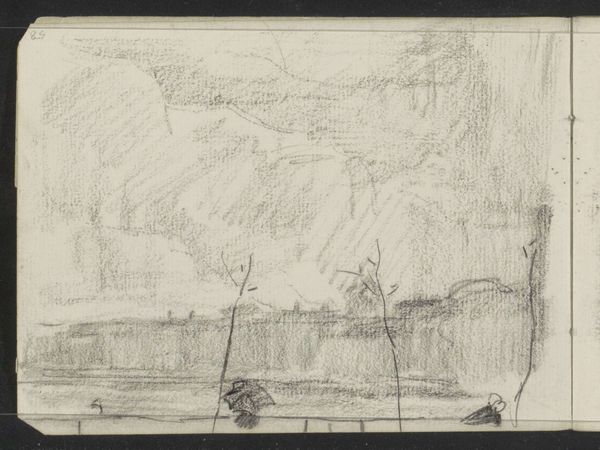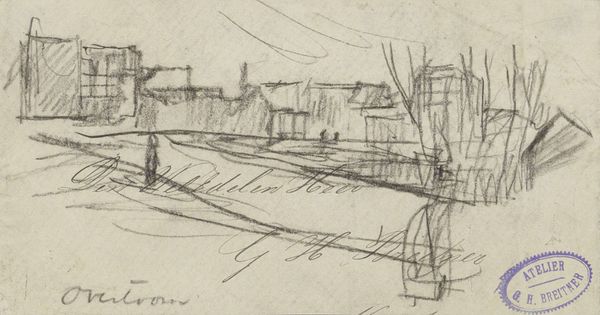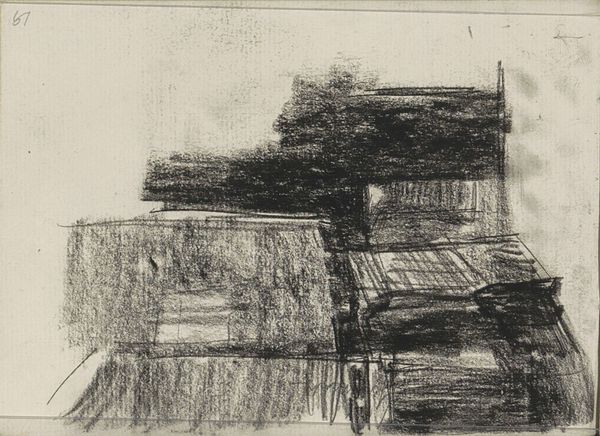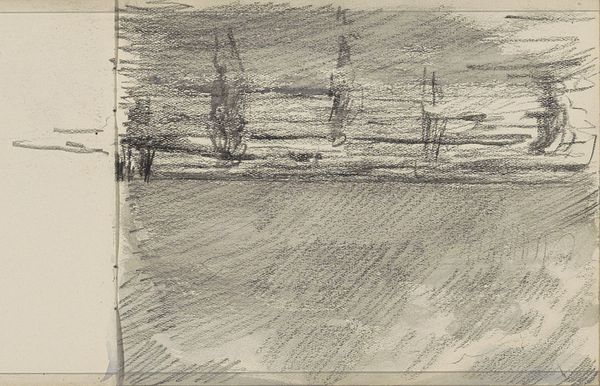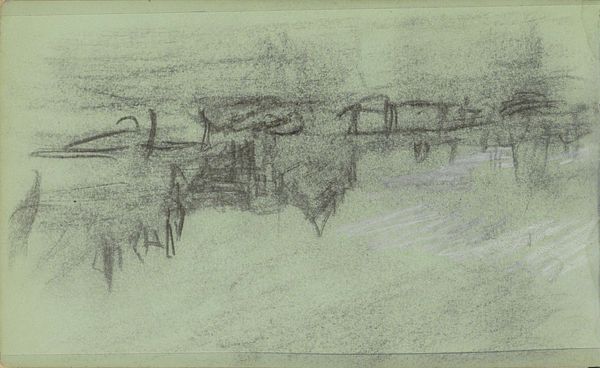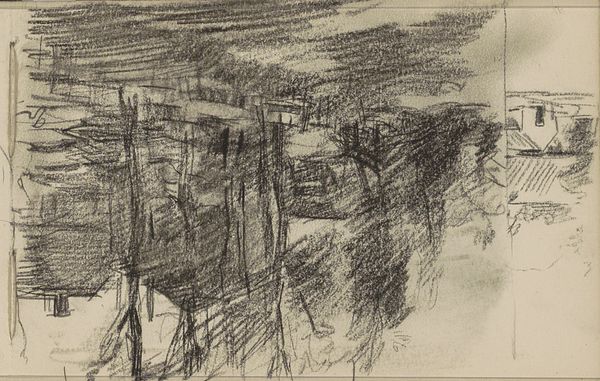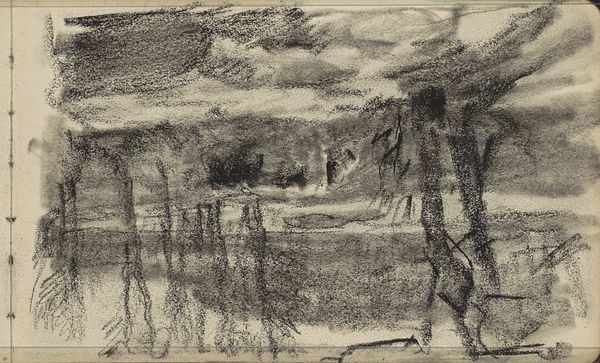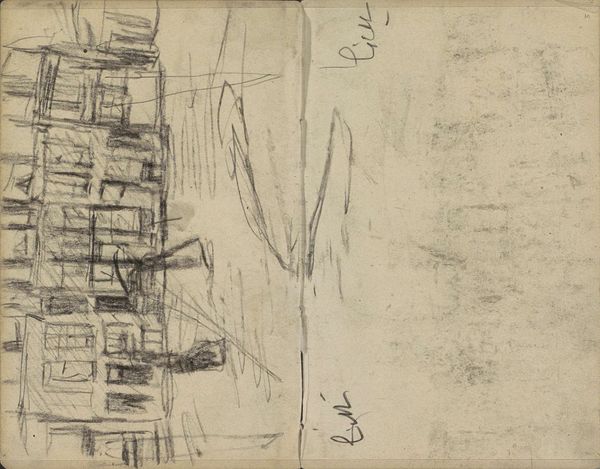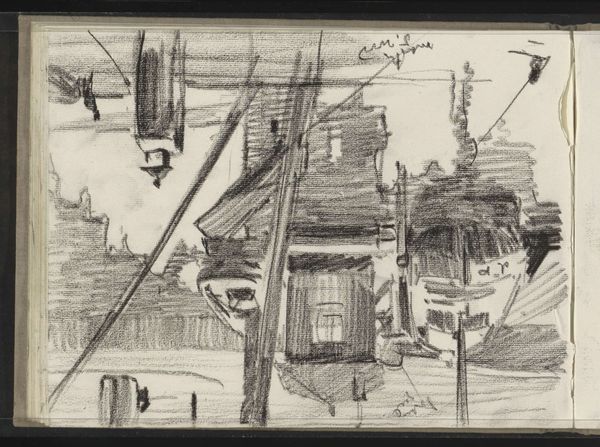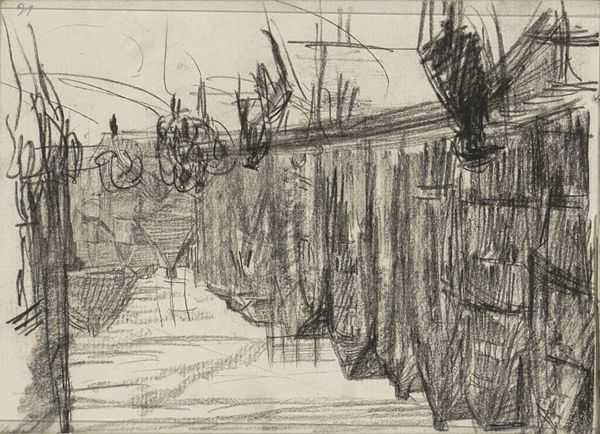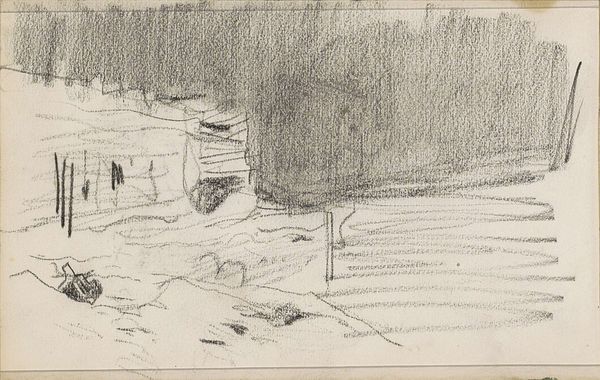
Copyright: Rijks Museum: Open Domain
Curator: Isaac Israels created this graphite drawing, “Vlak landschap met kale bomen en bebouwing,” or "Flat Landscape with Bare Trees and Buildings," sometime between 1886 and 1934. Editor: There’s such starkness. The bare branches look almost like skeletal fingers against that overcast sky. It's really minimal, really raw. Curator: It’s the rawness that draws me in as well. You see how Israels has used graphite to give depth, light, and texture? The strokes show a landscape not necessarily as it *is*, but the impression it leaves behind. Editor: It's a perfect little sketch, really. Look at how quickly he seems to have captured that building on the left; a flurry of marks really implies material and volume in so few gestures. What kind of paper do you think he's using? The texture almost adds another layer to the image. Curator: Perhaps the type of paper contributes to the landscape's meaning: The sketch becomes a sort of symbol of what it represents, bare bones against some impending, dark storm. Editor: Impending perhaps due to its actual production and availability in this specific period and region? I mean this doesn't feel overly polished - very much a working drawing? It's that direct relationship between artist, material, and subject that really holds my attention. Was Israels sketching in the fields, the wind perhaps catching this very piece of paper? Curator: We can't say definitively whether Israels was creating plein air here, but there is an urgency to his style, almost an impulse that perfectly encapsulates that era of Impressionism. There is certainly a social resonance there with what it stood for: the industrial revolution impacting rural spaces, that loss. Editor: And what does that industrial impact mean materially for the production and access to images such as these? Did industrial production methods democratize or commercialize artwork, changing its social value for good or for ill? It's hard to tell what the symbols ultimately represented for Israels or his audiences but the material story is quite tangible. Curator: A valuable thought - this simple graphite sketch evokes so much about time, place, memory. Editor: Indeed. Thank you for that insight.
Comments
No comments
Be the first to comment and join the conversation on the ultimate creative platform.
